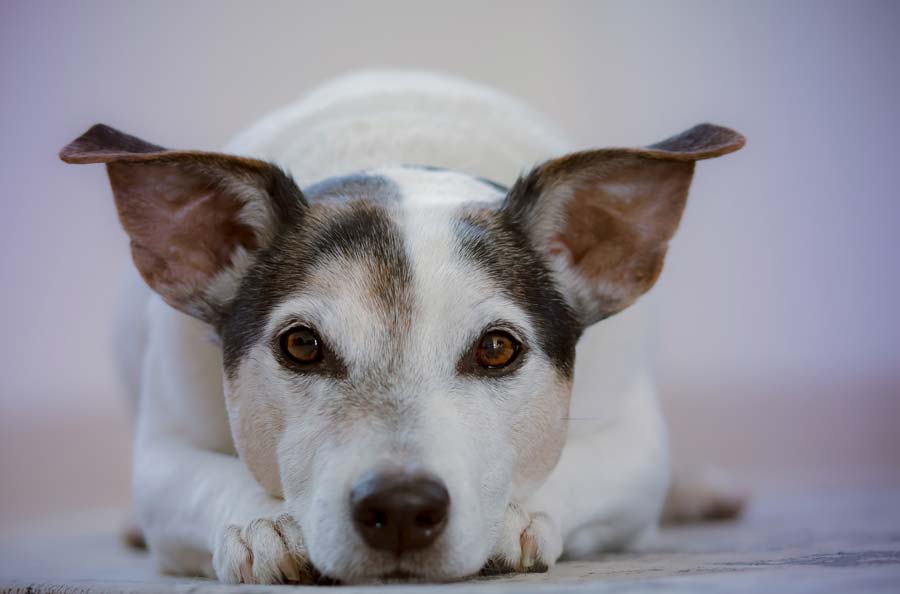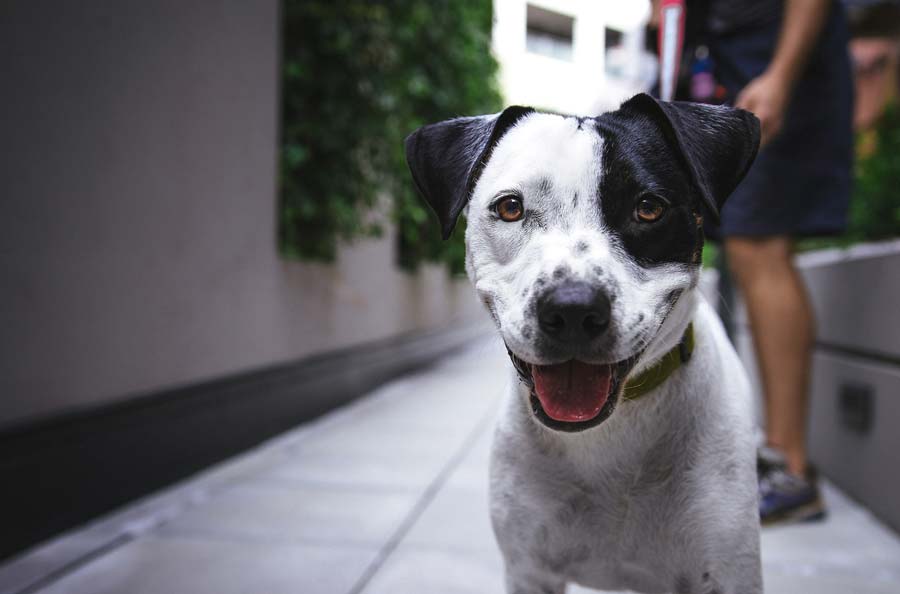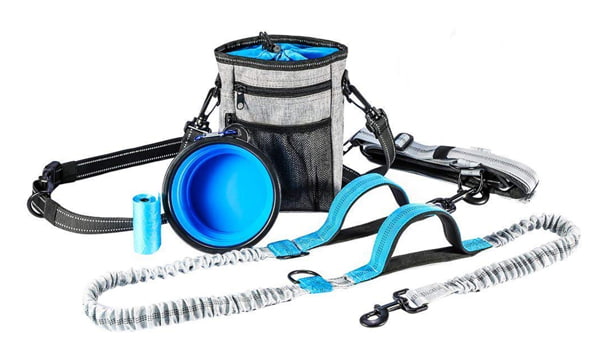Like humans, many dogs suffer from anxiety and other related disorders. And, like humans, dogs can take medication to help ease the symptoms associated with these issues. One of the most popular options for treating anxiety in humans and dogs is diazepam, sometimes called by the brand name Valium. In addition to relieving anxiety in dogs, diazepam can also be used as a muscle relaxant and for treating seizures and other medical conditions. For instance, diazepam might be given to dogs with:
If you’re trying to help your dog deal with anxiety or another medical condition and think diazepam could be a solution, or your vet has recommended giving your dog diazepam, what do you need to know?
Diazepam works by increasing a certain acid (GABA) in the brain that blocks the neurotransmitters that trigger excitement and anxious feelings. The medicine itself isn’t calming the brain, but it’s causing the brain to not receive the signals that cause anxiety. It is very effective, but that doesn’t mean that every dog should use it. It also needs to be used carefully, under the supervision of a veterinarian, and as directed.

Like all medications, diazepam can trigger side effects in dogs. These side effects are more likely to occur after long-term use. So, chances are less your dog will experience side effects if he or she takes diazepam for a certain event – maybe a car trip or a visit to the groomer – than if he or she is taking the drug to treat a chronic medical condition. However, side effects can occur in any instance and even if there has never been a problem in the past using the medication.
There can also be a negative reaction from your dog if you abruptly stop using diazepam and you should never stop using a drug without speaking to your vet. And finally, negative side effects can occur if diazepam is used in conjunction with other medications. For instance, diazepam is known to interact with ordinary antacids. This is one reason why your veterinarian should always be aware of what other drugs your dog is taking.
It should be noted, diazepam, like all drugs, can interact with natural and holistic remedies. This includes vitamins and supplements. Make sure your vet knows everything you give your pet and that you report anything unusual that you notice after giving your dog diazepam. Mixing two harmless medications or remedies of any kind together can create a toxic blend that is no longer safe for your pet.
It’s also a good idea to blend diazepam with lifestyle changes intended to ease your dog’s symptoms. For instance, if your dog experiences anxiety because of certain household noises, try to limit those noises or keep your dog as far from them as possible. You can restrict your dog’s movements in the house with gates like these.
Things like this aren’t a complete solution, which is one of the reasons diazepam can be useful for dog anxiety, but a comprehensive approach can make the entire situation better and keep your pet as comfortable as possible.
Diazepam is known to trigger a number of common side effects. These are side effects that occur frequently enough that you should expect to see them and include:
The risk for your dog to experience side effects increases with prolonged use of diazepam, as does the risk of withdrawal symptoms when you stop using the mediation after a prolonged period of time. It’s also important to be on the lookout for more severe symptoms such as liver damage, bruising or bleeding, and anemia, all of which are more common after prolonged use of the drug. Anemia symptoms include gum paleness and feebleness.

It is possible to overdose your dog on diazepam. Symptoms of overdose include confusion, delayed reflexes, and coma. More humans than dogs have suffered an overdose of diazepam, and as a result, experienced hypotension and cardiac arrest. It is not yet known if these consequences of overdose are an issue for dogs.
Finally, there is potential for your dog to experience an allergic reaction to diazepam, as is the case with any medication. Contact your vet immediately if you notice any signs of an allergic reaction or anaphylaxis after giving your dog diazepam. Symptoms of an allergic reaction in a dog that has taken diazepam include:
If an allergic reaction to diazepam occurs, you should seek emergency veterinary care immediately.
Additionally, dogs that are anemic, elderly, suffer from liver or kidney disease, or have trouble breathing aren’t ideal candidates for diazepam. Some can handle it, but they need to be carefully monitored.
Also, keep in mind, diazepam should not be given to dogs who are pregnant. Diazepam can cause birth defects, so you’ll want to avoid the medication if at all possible if your dog is pregnant.
Diazepam can be used safely, but there are also a few potential side effects to know about when giving your dog the medication. Knowing what to watch for and identifying a reaction to diazepam is only half the battle – you must also know what to do when a side effect occurs.
Much of this depends on the severity of the side effect. For instance, diazepam is known to increase a dog’s appetite. In some cases, it is prescribed to dogs that are struggling with medical conditions that have caused a lack of appetite or anorexia. If your dog’s appetite increases after taking diazepam, you can provide a bit of extra food, but it’s important not to overfeed your dog. This can lead to weight gain and result in a new set of medical problems for your pet. You should speak to your vet about maintaining a healthy weight and dealing with appetite fluctuations when using diazepam, but it’s not a side effect that needs immediate medical attention. It’s also a good idea to keep your dog active and to include daily walks as a part of his or her fitness routine.
On the other hand, if your dog experiences a serious reaction to diazepam, you are facing a side effect that requires immediate attention. The best thing you can do is call your vet if you notice anything unusual happening. If your vet is not available and your dog appears to be having a severe reaction to the medication, you should take your pet to an emergency care facility for immediate medical attention.
Diazepam can cause vomiting and diarrhea, which can develop into serious medical conditions if not treated promptly. Dogs, especially smaller ones, tend to become dehydrated very quickly. Dehydration is a very serious medical problem for dogs and might need attention from a medical professional. If your dog vomits or has diarrhea after taking diazepam, contact your vet. And if the vomiting and/or diarrhea continues, take your dog to see a veterinarian for medical attention.

The dosage of diazepam you give to your dog should depend on the directions you’ve been given by your vet. However, it can help to have a general guideline and know what the average dog of comparable medical issue and/or size to your dog takes so you can question your vet if a significantly different dose is recommended.
Diazepam is almost always given orally, especially when administered by pet owners at home, but it is available intravenously. It might also be administered rectally.
The following guidelines are what you might expect your vet to recommend based on your dog’s condition and his or her weight:
One of the most common reasons dogs are given diazepam is to treat epilepsy and other seizure disorders. Diazepam is a fast-acting, potent anticonvulsant, which means it’s an ideal therapy for dealing with epilepsy. However, due to its power, it must also be carefully monitored and given only under the supervision of a vet.
If your dog experiences a seizure, it’s important to contact your vet immediately or take your dog to an emergency care facility. If you have diazepam at home that was prescribed for another reason to a human or a pet, do not give it to your dog without speaking to your vet. The amount of diazepam given to a dog must be carefully determined by a vet and using the drug without the guidance of a vet because you think it might help your dog with a seizure can be fatal.
In some cases, diazepam will be given intravenously to dogs that suffer from epilepsy. When administered in this manner it will work within a minute. However, it does not offer a long duration of effectiveness, so it is not considered a definitive therapy for seizures. (Many dogs might be given diazepam initially to deal with seizures, but then take lorazepam long-term to control disorders.)
Another reason why diazepam isn’t considered an ideal long-term treatment for dogs with seizures is that they must be slowly weaned off the medication to prevent aggressive behavior. There are safer alternatives that don’t trigger the same behavioral side effects, which is why diazepam is viewed by many vets as just a short-term solution.
It’s very easy to overdose on diazepam and you need to administer the drug to your dog only under the direct supervision of a vet. If you are given a prescription for your dog for diazepam, you should follow the instructions exactly and contact your vet immediately if there are any issues.
It’s also important to avoid giving diazepam to dogs that are pregnant or nursing, even if the mother suffers from seizures or epilepsy. Diazepam absorption is able to quickly reach the placenta and sedate unborn puppies in a dosage that is far too much for their bodies to handle. Giving diazepam to a pregnant or nursing mother can cause an overdose in puppies. Make sure you tell your vet about any potential pregnancy or if your dog has nursing puppies at home if you have to take your dog in due to a seizure. That way your vet can make a proper determination as to what type of treatment is going to be the safest and best option for mother and puppies.

If you are instructed by your vet to give your dog diazepam to treat epilepsy or other seizure disorders, you need to be aware of the most common side effects. After giving your dog a dose of diazepam, watch for:
If you notice any of these symptoms after a short-term dose of diazepam, you should not administer the next dose and contact your vet immediately. Make sure your dog drinks plenty of fresh water if there are issues with vomiting or diarrhea. If your dog is unwilling or unable to drink, you will likely need a visit to the vet so your dog can be given IV fluids to help with dehydration.
Dehydration becomes the most serious health concern when your dog is vomiting or has diarrhea and preventing and/or treating it should be your first health concern in this situation.
Also, keep in mind it is possible for your dog to overdose on diazepam when taking the medication to treat seizures. Overdose can be fatal and you should seek medical attention immediately if you believe this has occurred.
Long-term use of diazepam to treat epilepsy and seizures, in general, is rarely considered a good idea. This is because dogs tend to develop a tolerance to the drug quickly and the safe dose is no longer enough to prevent the problem. In most cases, you’ll be given diazepam initially and then prescribed a course of treatment that is safe and effective for long-term management of seizures in dogs. If this is not the case, ask your vet why he or she has chosen to use diazepam long-term.
Use of this diazepam and any drug requires professional guidance from a vet who is familiar with your pet’s medical history and current health challenges. Diazepam is a powerful sedative and muscle relaxant that comes with risks and there are usually better long-term solutions for a dog’s anxiousness or any other medical condition. Sometimes this is the case short-term, as well. However, there are instances in which diazepam is a lifesaver and the best course of treatment for your dog. You and your vet can decide the best approach to treatment for your pet.
You should only ever give your dog diazepam you have been given by your vet. Though the medication is often prescribed to humans, it might not be in the right dosage and should never be administered to anyone other than the intended prescription recipient.
It’s also important to be careful when you have diazepam in the home. It’s an extremely powerful drug and can easily be overdosed on. If you are giving your dog diazepam, you need to keep any unused or yet-to-be-used portion of the medication away from pets and children. If a dog or human gets into diazepam and takes it without a prescription or in a dose too high for their body to handle it can be fatal. You should contact your vet (if it’s your pet) or poison control (if it’s your child) immediately if diazepam is accidentally ingested in any dosage.
Diazepam can be a very effective option for helping your pet deal with medical challenges, but it isn’t ideal for every dog. Even when it is effective for your pet, it should not be used long-term because of the increased risk for complications. You should never immediately stop giving your dog diazepam without vet supervision, but you might be able to wean your dog off the medication and opt for a safer alternative. If your dog has been taking diazepam, it’s a good idea to speak to your vet about safer alternatives that might even be more effective. And if you are wondering if diazepam might help an existing issue and you have not yet spoken to your vet, now is the time to do so.







